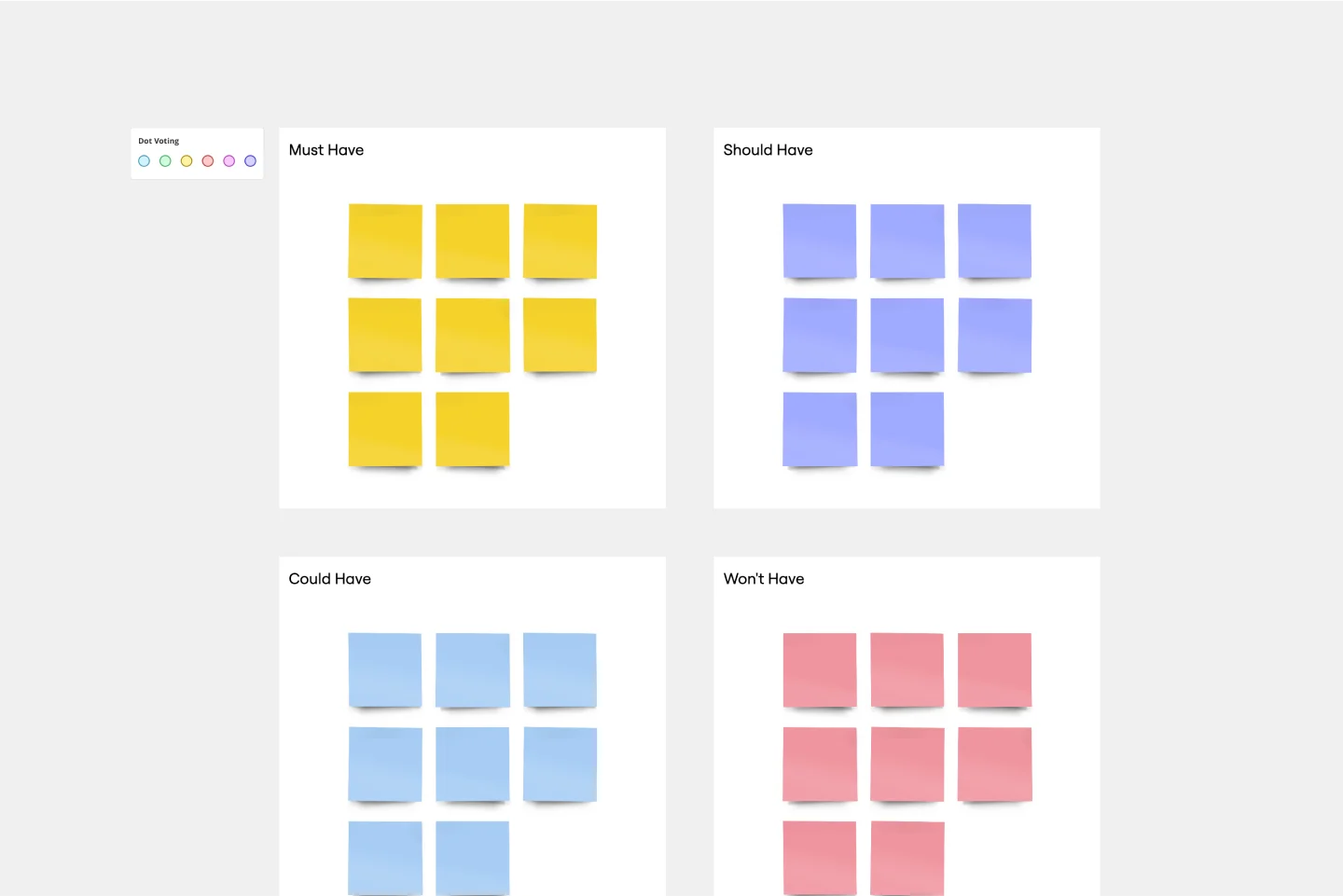When to use the MosCoW Priorization Method?
"When everything matters, nothing matters."
Whether it's about features of a product or measures in the cause of the digital transformation of an organization, sooner or later, these questions will almost certainly come up:
🤔 Is the idea good?
😟 Is the idea worth implementing?
😥 Should we prioritize the idea for immediate implementation or rather for later?
If you ask these questions as a team as well and get caught up in discussions while searching for answers, then you should try the following method.
How does the MoSCoW Method work?
The MoSCoW method is a prioritization framework that can be applied to any type of situation or project. However, it works best when a larger number of tasks and requirements should be prioritized in a group with all stakeholders.
The core objective of the process is to classify ideas or tasks into four areas: "Must", "Should", "Could", "Won't". "Must" has the highest priority and "Won't" has the lowest.
To decide which of the four areas to categorize an idea into, use the following definitions:
Must: Must have and absolutely necessary.
Should-Have: Should be implemented if all the must-requirements can still be met
Could-Have: Can be implemented if the fulfillment of higher-level requirements is not affected
Won't-Have: Will be penciled in for the future, but not implemented for now.
Benefits of this method
It is clear to all stakeholders which activities are critical to the success of the project.
The expectations of the project team and stakeholders are aligned.
It is easier to identify activities that can be neglected if deadlines are in danger or resource bottlenecks occur.
Unlike prioritization with numbers ("What does 2 mean again??"), words create more clarity about how important a requirement is.
The method is simple to implement: List goals and assign one of the categories - done!
We hope the matrix will be useful to you in your next project.








